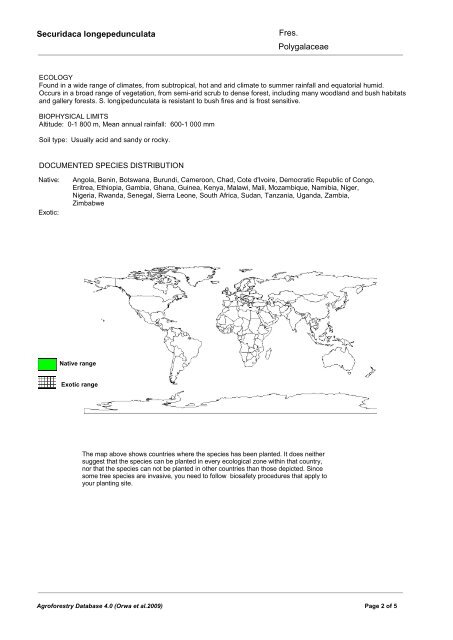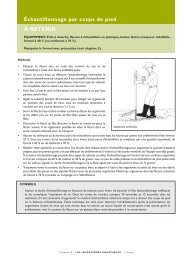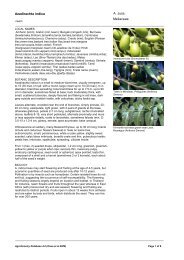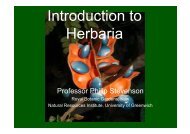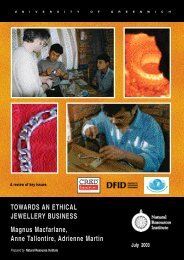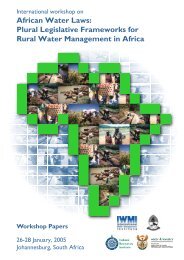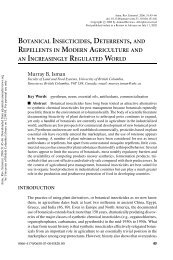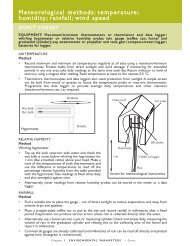Securidaca longepedunculata fact sheet
Securidaca longepedunculata fact sheet
Securidaca longepedunculata fact sheet
Create successful ePaper yourself
Turn your PDF publications into a flip-book with our unique Google optimized e-Paper software.
<strong>Securidaca</strong> <strong>longepedunculata</strong><br />
Fres.<br />
Polygalaceae<br />
ECOLOGY<br />
Found in a wide range of climates, from subtropical, hot and arid climate to summer rainfall and equatorial humid.<br />
Occurs in a broad range of vegetation, from semi-arid scrub to dense forest, including many woodland and bush habitats<br />
and gallery forests. S. longipedunculata is resistant to bush fires and is frost sensitive.<br />
BIOPHYSICAL LIMITS<br />
Altitude: 0-1 800 m, Mean annual rainfall: 600-1 000 mm<br />
Soil type: Usually acid and sandy or rocky.<br />
DOCUMENTED SPECIES DISTRIBUTION<br />
Native:<br />
Exotic:<br />
Angola, Benin, Botswana, Burundi, Cameroon, Chad, Cote d'Ivoire, Democratic Republic of Congo,<br />
Eritrea, Ethiopia, Gambia, Ghana, Guinea, Kenya, Malawi, Mali, Mozambique, Namibia, Niger,<br />
Nigeria, Rwanda, Senegal, Sierra Leone, South Africa, Sudan, Tanzania, Uganda, Zambia,<br />
Zimbabwe<br />
Native range<br />
Exotic range<br />
The map above shows countries where the species has been planted. It does neither<br />
suggest that the species can be planted in every ecological zone within that country,<br />
nor that the species can not be planted in other countries than those depicted. Since<br />
some tree species are invasive, you need to follow biosafety procedures that apply to<br />
your planting site.<br />
Agroforestry Database 4.0 (Orwa et al.2009)<br />
Page 2 of 5


